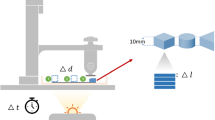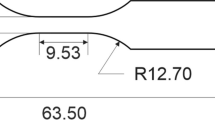Abstract
In additive manufacturing, separation is an important issue in constrained-surface digital light processing. A force higher than the force peak and a sharp increase in force increase the printing failure rate. This study comprehensively evaluated the performance of a low-cost spring-assisted separation mechanism. The Taguchi method was used to confirm the correlation between the inputs of the spring-assisted mechanism (number, coefficient, working height, free height of spring, and length of working arm) and obtain the parameters that minimize the separation force and time. Compared to the pulling-up and tilting mechanisms, the spring-assisted mechanism reduces the difference between the maximum and minimum separation forces for different geometric shapes and areas by 2.4 and 3 times, respectively. In addition, the spring-assisted mechanism solves the problems of the pulling-up mechanism, which has two separation force peaks, and the tilting mechanism, which has a sharp increase in force before the final separation. Finally, the separation force of specific geometric shapes and areas was predicted by the linear regression equation, and the error rate was maintained within 5%, which helped to significantly reduce the calculation costs and time.











Similar content being viewed by others
Dat availability
Not applicable.
Code availability
Not applicable.
References
Jandyal A, Chaturvedi I, Wazir I, Raina A, Haq MIU (2022) 3D printing–a review of processes, materials and applications in industry 4.0. Sustain Oper Comput 3:33–42
Dezaki ML, Serjouei A, Zolfagharian A, Fotouhi M, Moradi M, Ariffin MKA and Bodaghi M (2022). A Rev iew on additive/subtractive hybrid manufacturing of directed energy deposition (DED) process. Adv Powder Mat 100054
Moradi M, Aminzadeh A, Rahmatabadi D, Hakimi A (2021) Experimental investigation on mechanical characterization of 3D printed PLA produced by fused deposition modeling (FDM). Mat Res Express 8(3):035304
Ghanavati R, Naffakh-Moosavy H, Moradi M (2021) Additive manufacturing of thin-walled SS316L-IN718 functionally graded materials by direct laser metal deposition. J Market Res 15:2673–2685
Mostafa KG, Arshad M, Ullah A, Nobes DS, Qureshi AJ (2020) Concurrent modelling and experimental investigation of material properties and geometries produced by projection microstereolithography. Polymers 12(3):506
Li Y, Mao Q, Li X, Yin J, Wang Y, Fu J, Huang Y (2019) High-fidelity and high-efficiency additive manufacturing using tunable pre-curing digital light processing. Addit Manuf 30:100889
Pagac M, Hajnys J, Ma QP, Jancar L, Jansa J, Stefek P, Mesicek J (2021) A review of vat photopolymerization technology: materials, applications, challenges, and future trends of 3d printing. Polymers 13(4):598
Wang J, Das S, Rai R, Zhou C (2018) Data-driven simulation for fast prediction of pull-up process in bottom-up stereo-lithography. Comput Aided Des 99:29–42
Ding H, Dong M, Zheng Q and Wu ZL (2022) Digital light processing 3D printing of hydrogels:a minireview. Mol Syst Des Eng 7(9):1017–1029
Santoliquido O, Colombo P, Ortona A (2019) Additive Manufacturing of ceramic components by Digital Light Processing: a comparison between the “bottom-up” and the “top-down” approaches. J Eur Ceram Soc 39(6):2140–2148
Gritsenko D, Yazdi AA, Lin Y, Hovorka V, Pan Y, Xu J (2017) On characterization of separation force for resin replenishment enhancement in 3D printing. Addit Manuf 17:151–156
Pan Y, He H, Xu J, Feinerman A (2017) Study of separation force in constrained surface projection stereolithography. Rapid Prototyp J 23(2):353–361
Ambrosio D, Gabrion X, Malecot P, Amiot F, Thibaud S (2020) Influence of manufacturing parameters on the mechanical properties of projection stereolithography–manufactured specimens. Int J Adv Manuf Technol 106(1):265–277
Mostafa KG, Arshad M, Ullah A, Nobes DS, Qureshi AJ (2020) Concurrent modelling and experimental investigation of material properties and geometries produced by projection microstereolithography. Polymers 12(3):506
He H, Xu J, Yu X and Pan Y (2018) Effect of constrained surface texturing on separation force in projection stereolithography. J Manuf Sci Eng 140(9)
Jiang Y, Wang Y, He H, Feinerman A, Pan Y (2020) Constrained window design in projection stereolithography for continuous three-dimensional printing. 3D Print Addit Manuf 7(4):163–169
Wu X, Xu C, Zhang Z (2021) Flexible film separation analysis of LC. J Mat Process Technol 243:288116916
Li Y, Mao Q, Li X, Yin J, Wang Y, Fu J, Huang Y (2019) High-fidelity and high-efficiency additive manufacturing using tunable pre-curing digital light processing. Addit Manuf 30:100889
Li X, Kang X, Xiao H, Duan Y (2022) Low adhesion continuous constrained-surface projection stereolithography process based on curing degree control. Addit Manuf 54:102743
Alamdari A, Lee J, Kim M, Emon MOF, Dhinojwala A, Choi JW (2020) Effects of surface energy reducing agents on adhesion force in liquid bridge microstereolithography. Addit Manuf 36:101522
Wang JC, Ruilova M and Lin YH (2017) The development of an active separation method for bottom-up stereolithography system. In 2017 IEEE/SICE International Symposium on System Integration (SII), IEEE: 108–114
Wu X, Lian Q, Li D, Jin Z (2017) Tilting separation analysis of bottom-up mask projection stereolithography based on cohesive zone model. J Mater Process Technol 243:184–196
Wu X, Lian Q, Li D, Jin Z (2017) Tilting separation analysis of bottom-up mask projection stereolithography based on cohesive zone model. J Mat Process Technol 243:288
Jin J, Yang J, Mao H, Chen Y (2018) A vibration-assisted method to reduce separation force for stereolithography. J Manuf Process 34:793–801
Xu Y, Zhu Y, Sun Y, Jin J, Chen Y (2021) A vibration-assisted separation method for constrained-surface-based stereolithography. J Manuf Sci Eng 143(5)
Lin YS, Yang CJ (2019) Spring assisting mechanism for enhancing the separation performance of digital light process 3D printers. IEEE Access 7:71718–71729
Khadilkar A, Wang J, Rai R (2019) Deep learning–based stress prediction for bottom-up SLA 3D printing process. Int J Adv Manuf Technol 102(5):2555–2569
Yadegari F, Fesharakifard R, Barazandeh F (2021) Numerical and experimental investigation of effective parameters on separation force in bottom-up stereolithography process. AUT J Mech Eng 5(3):4–4
Gritsenko D, Paoli R, Xu J (2022) The effect of acceleration on the separation force in constrained-surface stereolithography. Appl Sci 12(1):442
He H, Yang Y, Pan Y (2018) Machine learning for modeling of printing speed in continuous projection stereolithography. In?2018 International Solid Freeform Fabrication Symposium. University of Texas at Austin
Wang J, Das S, Rai R, Zhou C (2018) Data-driven simulation for fast prediction of pull-up process in bottom-up stereo-lithography. Comput Aided Des 99:29–42
Kudo 3D. Available: https://www.kudo3d.com/. Accessed 8 Aug 2022
MiSUMi. Available: https://www.misumi.co.jp/english/. Accessed 8 Aug 2022
3DM Advanced Materials. Available:https://www.3dm-shop.com/. Accessed 8 Aug 2022
OMEGA Engineering. Available:https://www.omega.com/pptst/LC201.html. Accessed 8 Aug 2022
National Instruments. Available:http://www.ni.com/en-gb/support/model.usb-6002.html. Accessed 8 Aug 2022
Kovalenko I, Garan M, Shynkarenko A, Zeleny P, Safka J (2016) Examining the relationship between forces during stereolithography 3D printing and geometric parameters of the model. In?MATEC Web of Conferences? (Vol. 40, p. 02005). EDP Sciences
Yogesh P, Richa P, Chandrashekhar NS. and Karunakaran KP (2019) Layer separation mechanisms in DLP 3D Printing. In Advances in Additive Manufacturing and Joining. Springer, Singapore. 179–187
Zamheri A, Seprianto DRSC and Persada T (2020) The effect of parameter process 3D printer technology digital light processing to geometric of shaft. In Forum in Research, Science and Technology (FIRST). Politeknik Negeri Sriwijaya: 239–243
Putra DP, Yanis M, Seprianto D, Amrillah N and Basri H (2021) Optimization of production process parameters of DLP type 3D printer design for product roughness value. In 4th Forum in Research, Science, and Technology (FIRST-T1-T2–2020), Atlantis Press: 179–183
Yadegari F, Fesharakifard R, Barazandeh F (2021) Numerical and experimental investigation of effective parameters on separation force in bottom-up stereolithography process. AUT Journal of Mechanical Engineering 5(3):4–4
Acknowledgements
The authors would like to thank the National Science and Technology Council, R.O.C., for financial support (MOST 111-2621-M-110-001 and MOST 110-2622-E-027-029).
Author information
Authors and Affiliations
Corresponding author
Ethics declarations
Ethics approval
Not applicable.
Consent to participate
Not applicable.
Consent for publication
Not applicable.
Competing interests
Not applicable.
Additional information
Publisher's note
Springer Nature remains neutral with regard to jurisdictional claims in published maps and institutional affiliations.
Highlights
1. Comprehensively evaluated the performance of a low-cost spring-assisted mechanism for the separation process.
2. The Taguchi method was used to confirm the correlation between the inputs of the spring-assisted mechanism (number, coefficient, working height, free height of spring, and length of working arm) and obtain the parameters that minimize the separation force and time.
3. Compared to the pulling-up and tilting mechanisms, the spring-assisted mechanism reduces the difference between the maximum and minimum separation forces for different geometric shapes and areas by 2.4 and 3 times, respectively.
4. The spring-assisted mechanism solves the problems of the pulling-up mechanism, which has two separation force peaks, and the tilting mechanism, which has a sharp increase in force before the final separation.
5. The separation force of specific geometric shapes and areas was predicted by the linear regression equation, and the error rate was maintained within 5%, which helped to significantly reduce the calculation costs and time.
Appendices
Appendix 1
Appendix 2
Appendix 3
Rights and permissions
Springer Nature or its licensor (e.g. a society or other partner) holds exclusive rights to this article under a publishing agreement with the author(s) or other rightsholder(s); author self-archiving of the accepted manuscript version of this article is solely governed by the terms of such publishing agreement and applicable law.
About this article
Cite this article
Yang, CJ., Wu, SS. Comprehensive performance of a low-cost spring-assisted mechanism for digital light processing. Int J Adv Manuf Technol 125, 4099–4118 (2023). https://doi.org/10.1007/s00170-023-10977-2
Received:
Accepted:
Published:
Issue Date:
DOI: https://doi.org/10.1007/s00170-023-10977-2





